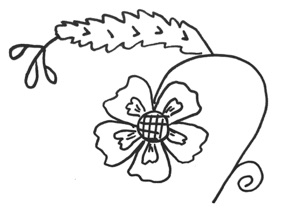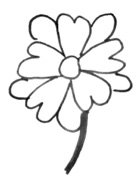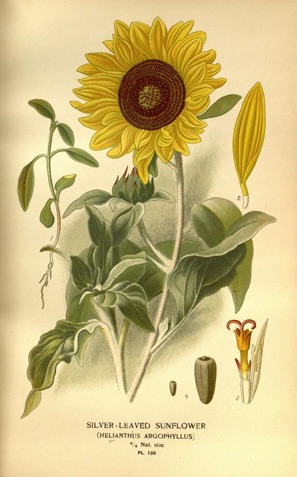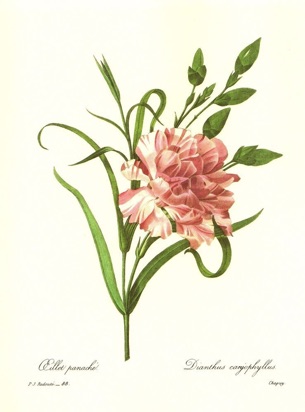Flower Motifs
“Named Flowers”

Flower Motifs
“Named Flowers”
Traditional pysanky abound with flowers, which are a symbol of beauty and of fertility and abundance.
The second group of flower motifs is specific named flowers. In this group we see flowers which usually bear at least a passing resemblance to their botanical namesakes: carnations, bells, daisies, violets, sunflowers and others. Those are the pysanky on this page
EDELWEISS This Bukovynian pysanka is called “Edelweiss” (Косиця); it bears no relation to an actual edelweiss plant, but is actually a variation on the berehynia with wings.

SUNFLOWERS, a favorite Ukrainian flower, are probably sun symbols. Sunflowers on traditional folk pysanky tend to be very simple, a circle with fringe, as in these Boiko and Kyiv region pysanka from Binyashevsky. The latter is actually a berehynia motif which has been renamed due to the characteristics of the head.


This traditional design, from Odarka Onyshchuk, is from the Chernihiv region and is also called “Sunflowers.”

Those created in the diaspora tend to be intricately drawn and quite botanically correct, as in these examples.



PERIWINKLE, or barvinok, is an evergreen plant, represents eternal life. It is also a vital component of every bride’s bouquet, and festoons the traditional wedding bread called korovai (коровай). It is represented on pysanky by its leaves, rather than the flowers, with a motif featuring 3 or 4 leaves.

Below are tow examples of pysanky with the barvinok motif. Th e one on the left is from the Kyiv region, and has a classic “trylyst” motif. The pysanka on the right is from Podillia, and has an unusual barvinok motif.


CARNATIONS
Carnations can sometimes be seen on pysanky, characterized by their notched petals and central floral disc.


and they resemble their real-life counterparts somewhat, like this pysanka from the Chernihiv region.

LILY-OF-THE-VALLEY Konvalia/конвалія is occasionally seen on pysanky. The pysanka on the left is an example collected by Binyashevsky from the Priashiv region (Slovakian Lemko). It is highly stylized, but sports the characteristic flower heads and leaf. On the right is a Pokuttian pysanka with a much more realistic version of the flowers.


CAMPANULA: Bellflowers can be seen in this pysanka from Chernihiv (“Дзвіночки”). It is not a common motif.

POPPY: Small red poppies grow wild in the fields of Ukraine in summer, and large cultivated ones in its gardens. It used to be that no garden in Ukraine was complete without a row of bright red cultivated oriental poppies, as poppy seeds feature prominently in Ukrainian cuisine, especially in its ritual dishes. Recently, though, cultivation of these poppies has been banned because they are not only a source of poppy seeds, but of opium. Poppies have been diverted into the drug trade, sometimes purposefully, but often by thieves stealing poppy crops.
Poppy motifs, though, are not found on traditional folk pysanky, although they are quite common in the Diaspora, where they are considered emblematic of Ukraine.
Poppies were not written on pysanky because, in folk tradition, they symbolized death. Poppies were never embroidered on rushnyky, either, except on those meant for funerals. Nor were poppies woven into vinky, the floral wreath/headdresses that young women wore, unless the wearer was in mourning for the death of a brother.
Since the desovietization movement which began after the Maidan, what had been the “Great Patriotic War” has become known instead as WWII, and it is now symbolized not by the Russian St. George’s ribbon, but by the poppy, as in many western nations.
These are a few examples of Diasporan poppy motifs:

And these are a few examples of Diasporan pysanky with poppies on them.



Specific Flowers

